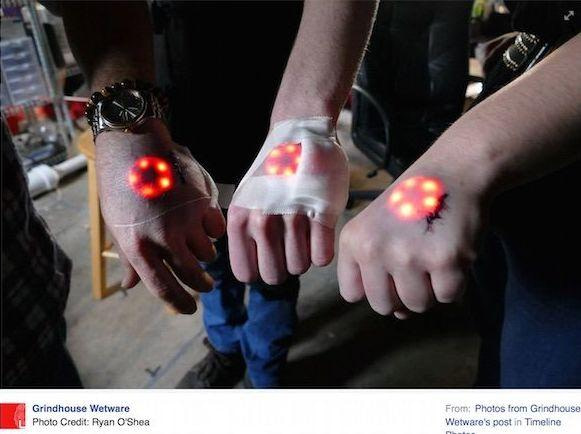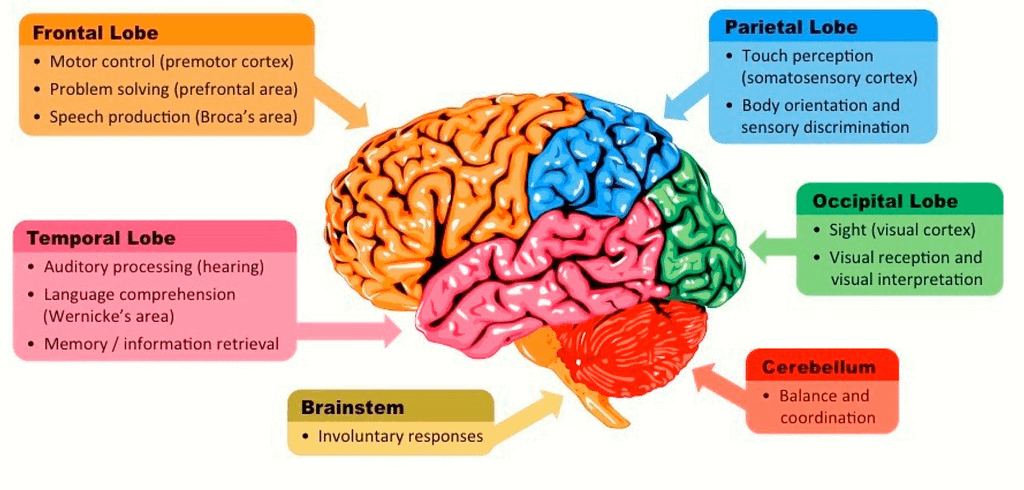There are about 10,000 people right now in Sweden alone who have one or two microchips implanted under their skin, usually in their hand or in the arm, which allows them to activate certain electronic devices or get access to protected areas, instead of entering passwords.

There are of course perhaps thousands of brain implants controlling parts of the body affected by moto-neuron disease, epilepsy, eyesight impairment, etc. One of the examples is of a completely paralyzed person, who in October 2019, wearing an exoskeleton, started to ‘walk’ using an implant in his brain. The implant was connected using wires. The scale of this achievement overshadows anything that has been done in this area so far and opens new possibilities for brain implants.
There are no people yet who have any brain implants, which might enable them to communicate wirelessly to store some information from their memory directly to external devices. But such devices are going to be implanted into humans in the next 2-3 years. In February 2020, Elon Musk’s company Neuralink, announced that it is building tiny and flexible ‘threads’ which are ten times thinner than a human hair and can be inserted directly into the brain. They intend to have first human implants with 3,200 electrodes ready within a year. However, in February 2021 scientists developed first brain implants using wireless technology. More importantly, they also achieved communication with a selected cluster of about 1,000 neurons using ultrasound waves, rather than injecting extremely fine electrodes. Most AI specialists expected such developments earliest in the 2030’. It looks now more likely that we shall have the first generation of such Transhumans by about 2025.
The implications of such developments could be immensely positive, and that’s what Elon Musk, the founder of Neuralink, emphasizes right now. Such implants will be able to cure partially, or even totally, some mental and brain-related disabilities, such as motor neuron disease, Alzheimer, or audio-visual impairments.
For Transhumans to extend their cognitive capabilities, we need brain implants, which can be extended by progressively adding more digitized cognitive brain functions. That means focusing on two brain lobes – Frontal lobe (neocortex), responsible for thinking, planning and decision making, and Temporal Lobe where memory, language and communication functions are mainly residing, rather than on the Reptilian brain, i.e. Cerebellum and the Brain Stem, responsible for co-ordination and movement. The implications of such developments could be immensely positive, and that’s what Elon Musk, the founder of Neuralink, emphasizes right now. Such implants will be able to cure partially, or even totally, some mental and brain-related disabilities, such as motor neuron disease, Alzheimer, or audio-visual impairments.
A different approach has been taken by the Connectome project, which intends to complete a full Brain Map by 2025, which would have been broadly in line with Neuralink’s expected delivery date of some more advanced brain implants. But from the Transhumans’ project point of view we need brain implants extending human cognitive abilities, which can be gradually extending by progressively adding more digitized cognitive brain functions. That means focusing on two brain lobes – Frontal lobe (neocortex), responsible for thinking, planning and decision making, and Temporal Lobe where memory, language and communication functions are mainly residing, rather than on the Reptilian brain, i.e. Cerebellum and the Brain Stem, responsible for co-ordination and movement.

For the Connectome project to be used as early as possible for Transhumans, it must focus on delivering parts of digitized brain such as Amygdala, rather than the whole digitized brain, which may take decades, but which may ultimately achieve the main objective – a complete mind uploading. Since it is still uncertain that the Connectome project refocuses its immediate objective, we need other approaches such as the Neuralink’s approach, which seems better suited for gradually expanding Transhumans’ cognitive capabilities with functionally equivalent components.
Other methods involve the so called ‘nanotransfer’. In this method, nanotechnology devices would be implanted into the brain and attached to individual neurons. In this way, the scientists could learn how those cells work and then use this information to simulate the behaviour of the neuron. This would lead to the construction of a functional analogue of the original neuron. Once the construction is complete, the original neuron can be destroyed and the functional analogue can take its place. This process can be repeated for every neuron, (there are about 86 billion in the human brain) until a complete copy of the original brain is constructed.
This is probably the pathway taken by Neuralink. Elon Musk says that himself, arguing that there will be nothing to stop these implants to be progressively used to expand human brain capabilities beyond the wildest dreams of AI developers even a few years ago. Irrespective of this long-term objective, quite soon early Transhumans may already be many times more intelligent and faster in decision-making than the most intelligent, purely biological humans. With immediate access to the entire Google repository, they might be able to resolve many problems faster than any current computer. They will simply have an advantage over a purely digital computer, by having consciousness and a general knowledge, which most advanced AI system will not have for at least another two decades, or so.
